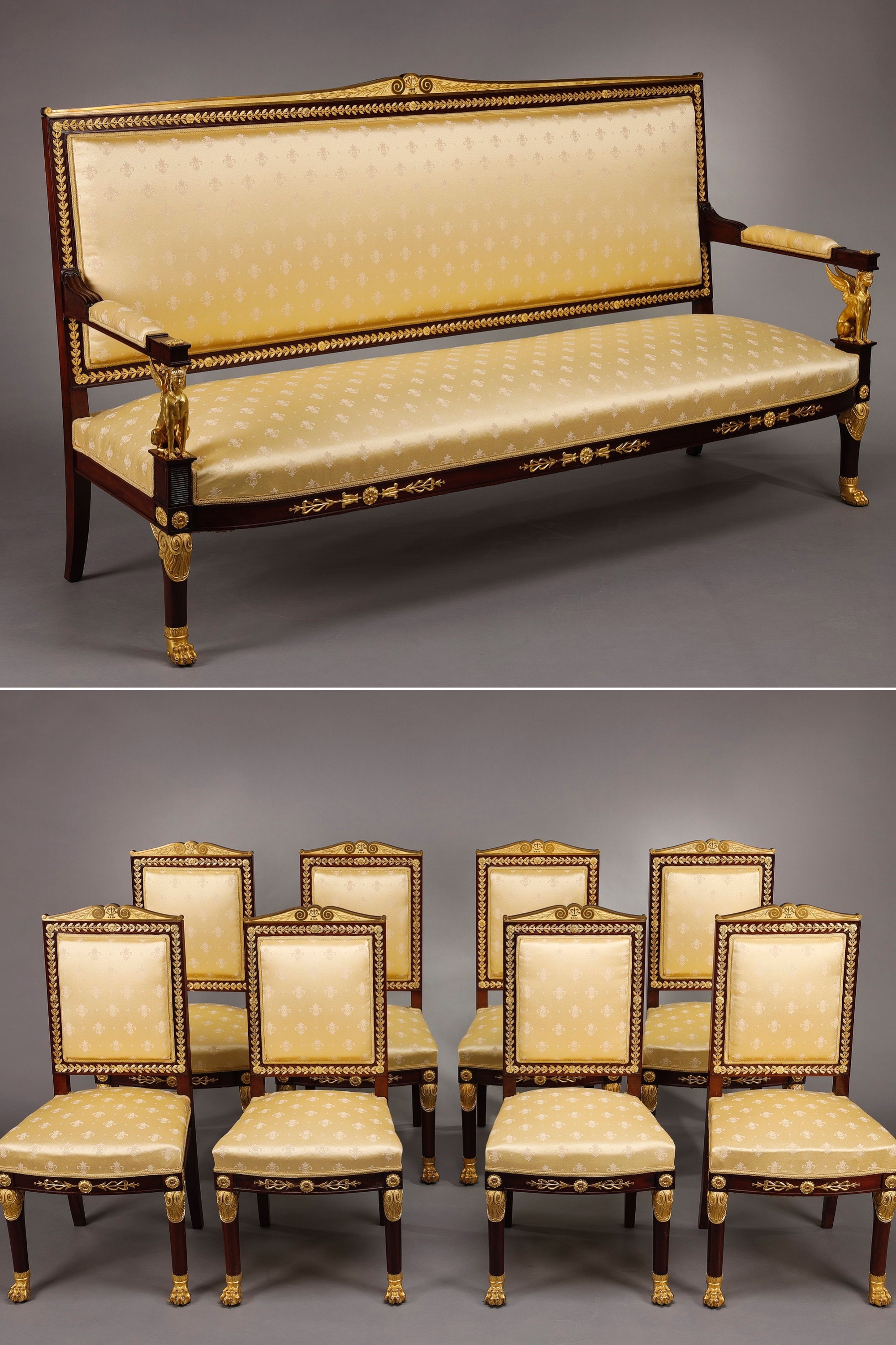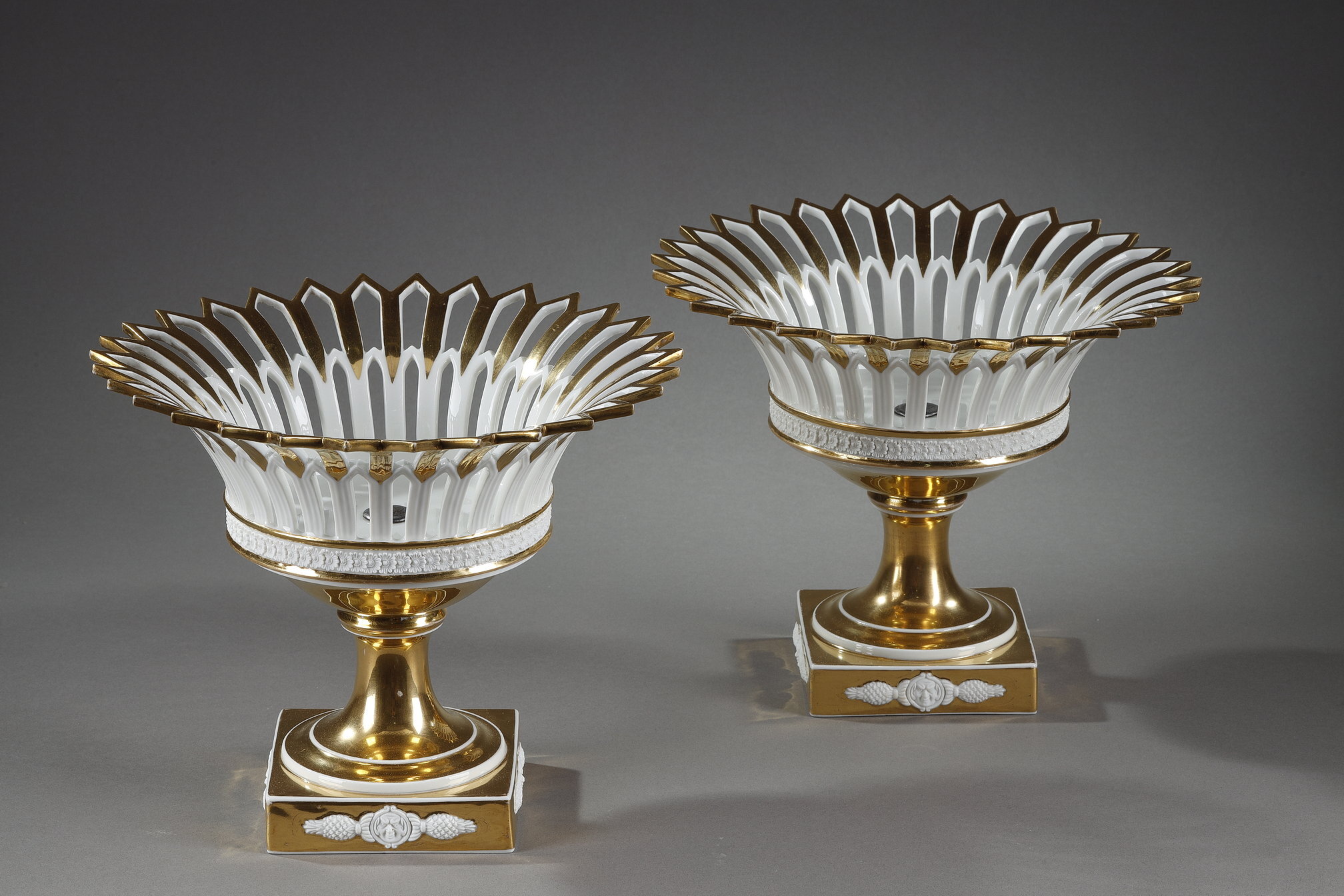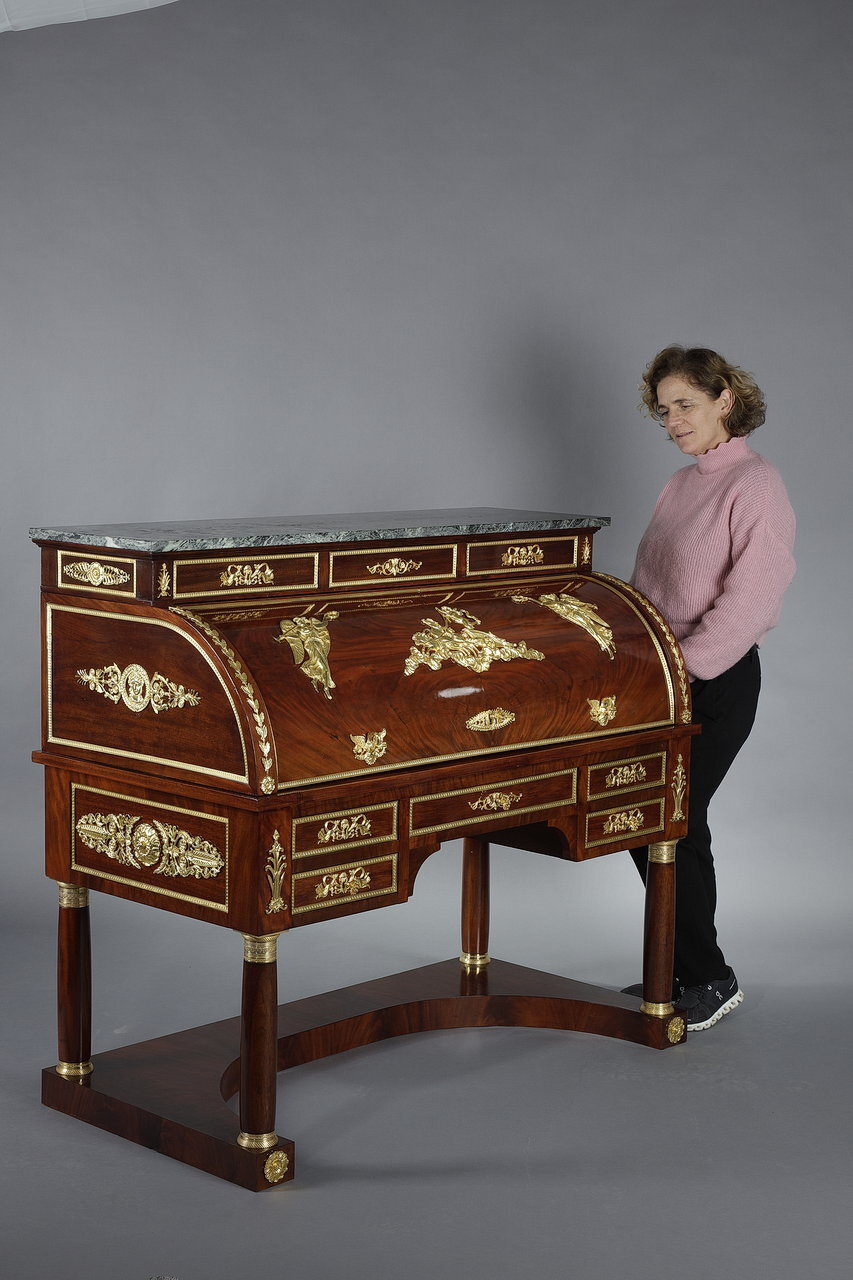The Empire style (1804-1815)
20.10.14
The Empire style developed under Emperor Napoleon I (1769-1821), who reigned from 1804 to 1815. The first beginnings of the Empire style can be traced back to the Directoire period (1795-1799), but it progressed after the return from the Egyptian campaign, notably with the Consulate (1799-1804).
Important Empire style pedestal table
The Empire style is a propaganda style. Designed to express the power of imperial majesty, it was intended to serve the Napoleonic epic, which could only find its historical equivalent in the conquests of Alexander the Great or Caesar.
This is why his inspiration deliberately neglects the tradition of French cabinetmaking since the Regency, and seeks out what ancient art has produced that is most monumental: the Rome of Augustus, the Egypt of the pharaohs or the Macedonia of Alexander the Great are the only ones capable of serving as a reference to imperial power.
Under the impetus of Charles Percier (1764-1838) and Pierre-François Fontaine (1762-1853), Napoleon I's architects and ornamentalists trained in Rome in the taste for classical antiquities, cabinetmakers, notably George Jacob's two sons, imposed an official style, established to enhance the splendor of the Empire.
The furniture
Subdued by Greco-Roman art, the Empire style is spare, noble and massive, with a dignity that serves Napoleon's majesty admirably.
The furniture as a whole is heavy, massive and imposing. They are geometrically shaped, balanced, with straight frames and sharp angles, usually made of solid mahogany or mahogany veneer. When mahogany stopped arriving in France, from 1810 onwards, Napoleon recommended that cabinetmakers use indigenous woods: walnut, elm, ash, golden beech or sometimes stained "mahogany style". The application of gilded bronze ornaments to these dark woods gave them even more lustre. The furniture was then filled with symbolic ornaments that met the emperor's classical tastes.
 Majestic Empire-style living room
Majestic Empire-style living room
The boat bed, the minister's desk, the tripod pedestal table, and the mirrored wardrobe became common pieces of furniture. Console tables, tall, narrow bookcases, tall "psyche" mirrors, and massive chairs with stiff legs ending in claws or constructed in a "saber" shape joined them in the apartments.
Decoration and ornamentation
All the furniture is embellished with matte, burnished and finely chiselled golden bronze motifs, generally in a simplified application. Strictly decorative, they are symmetrically distributed on the flat surfaces, of which they animate the sober masses.
The flat motifs are remarkable for their fine, responsive chasing and precise patterning.
Favourite motifs are the stylised palmette, the beetle and the caryatids in an Egyptian-inspired sheath, oak, laurel or ivy leaves, sometimes arranged in a crown, sphinxes and sphinges, swans, dolphins, winged lions, eagles, bees, lyres, trophies and stars. The warlike decorations of republican Rome, the winged victories, the Renomées and the ancient carriages are also widely used.
The predominant colours are golden yellow, green, crimson, and violet.
 Pair of Paris porcelain baskets, Empire period
Pair of Paris porcelain baskets, Empire period
Simple and majestic, solid and theatrical, the Empire style appears as essentially new. It disavowed all the frivolities of the Ancien Régime, all that could evoke the heritage of the Bourbons.
Its broad, clean lines, its ornamentation inspired by the great civilizations of the past, and its exceptional craftsmanship make it a witness to a glorious era, when people sought to surpass the triumph of legendary heroes.





